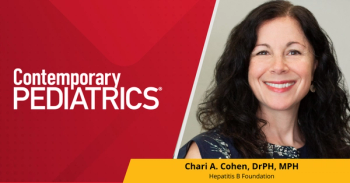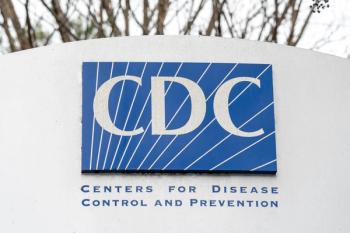
Asymptomatic nodules in an infant
An anxious mother asks you to evaluate two slowly growing asymptomatic nodules on the third and fourth fingers of her healthy 4-month-old son.
Key Points
• What's the diagnosis?• How would you treat her?
Diagnosis: Infantile digital fibromatosis
IDF is exceptionally rare, with most nodules present at birth or developing in the first few months of life. Lesions are usually solitary, but a second fibroma may be noted at the time of diagnosis or subsequently. Although the etiology of infantile digital fibromatosis is unknown, a viral trigger has been suggested by the presence of characteristic inclusion bodies. However, viral cultures have proven to be negative. The localization of vimentin and muscle-specific actin in the tumor cells supports a myofibroblastic origin.
Histopathology and differential diagnosis
The tumor is nonencapsulated and composed of interlacing bundles of spindle cells and collagen, which extend from just beneath the epidermis through the dermis into the fat. Unique light microscopy features include the presence of intracytoplasmic eosinophilic inclusion bodies.2
Infantile digital fibromas can usually be clinically distinguished from other fibrous tumors of infancy by their characteristic location on the tip of the fingers and toes. Acral fibrokeratomas (including periungual fibromas) present as dome-shaped or elongated thin horns, with a 1-mm to 3-mm base and height of 1 cm to 1.5 cm arising from the periungual groove. Although these papules can present as solitary lesions in otherwise healthy children, the presence of multiple periungual fibromas should prompt a careful evaluation for other cutaneous and systemic markers of tuberous sclerosis.
Treatment
Infantile digital fibromas are benign, and many nodules resolve without intervention over two to three years. Local excision often leads to recurrence, so surgery is recommended only when lesions interfere with function or cause pain. Limited case reports demonstrate successful debulking of tumors without recurrence, using the Mohs micrographic surgery technique.3
ROYA SAMUELS is a third-year pediatrics resident at Schneider Children's Hospital, New Hyde Park, NY
References
1. Dabney KW, MacEwen GD, Davis NE: Recurring digital fibrous tumor of childhood: case report with long-term follow-up and review of the literature. J Pediatr Orthop 1986;6:612
2. Bhawan J, Bacchetta C, Joris I, et al: A myofibroblastic tumor. Infantile digital fibroma (recurrent digital fibrous tumor of childhood). Am J Pathol 1979;94:19
3. Albertini JG, Welsch MJ, Conger LA, et al. Infantile digital fibroma treated with mohs micrographic surgery. Dermatol Surg 2002;28:959
Newsletter
Access practical, evidence-based guidance to support better care for our youngest patients. Join our email list for the latest clinical updates.










